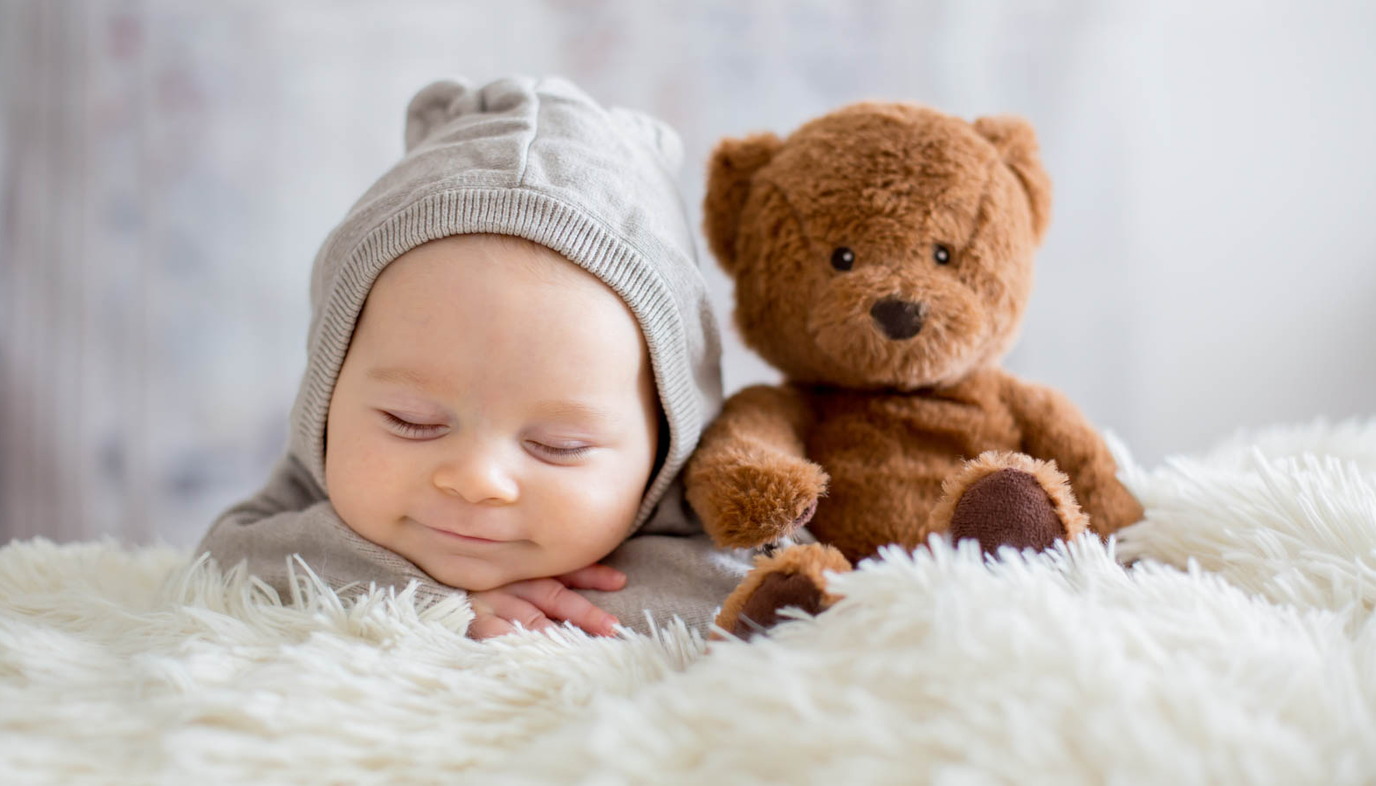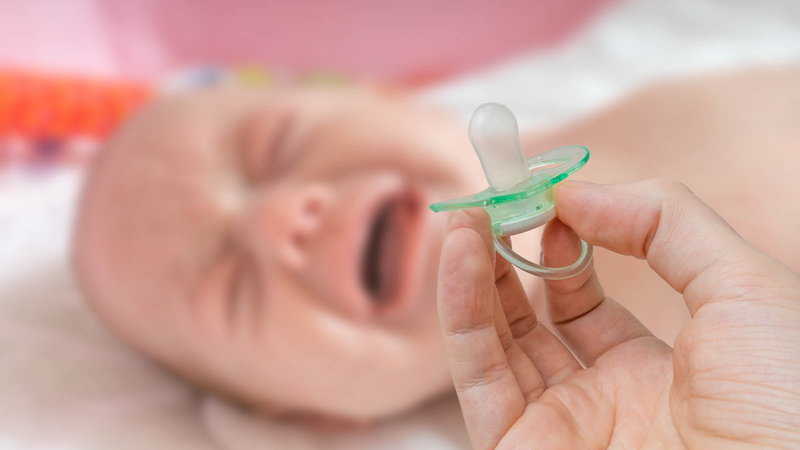
Over the last month, your baby has grown at a steady pace. He has gained around 4 to 7 ounces a week and grown about 1/2 to 1 inch a week in length. This pattern will continue until he’s around 6 months old, when his growth rate starts to slow down a bit. By the end of this month, you can expect your baby to weigh somewhere around 10 ½ to 11 lbs and measure about 22-23 inches in length.
Your baby’s life consists mainly of sleeping and eating. He still needs to eat frequently, around 5 to 7 times a day or more. He is becoming more sociable now. He knows who mommy and daddy are and recognizes your faces and voices. If you haven’t seen him smiling yet, you should see a little toothless grin on him soon. He may be cooing, smiling, giggling, and making noises now.
 He is starting to have more of a pattern to his sleep. He may be sleeping a little longer at night and for shorter stretches during the day. It’s unlikely that he is sleeping through the night yet, but he may be sleeping for 4 to 5 hour blocks overnight. Hopefully you are getting a little more sleep now.
He is starting to have more of a pattern to his sleep. He may be sleeping a little longer at night and for shorter stretches during the day. It’s unlikely that he is sleeping through the night yet, but he may be sleeping for 4 to 5 hour blocks overnight. Hopefully you are getting a little more sleep now.
If you haven’t started giving your baby “tummy time” yet, now is a good time to start. Tummy time helps strengthen your baby’s neck and upper body. A strong upper body is necessary for developmental milestones like rolling over, crawling, and sitting up. You can introduce tummy time by placing your baby on your chest while you are lying down and just letting him look around. As he gets comfortable being on his tummy, you can place him on a floor mat or blanket and put toys close by for him to reach for.
By the End of the Second Month Your Baby Can:
- Control his head steadier
- Smile back at you when you smile at him
- Respond to loud noises by startling or crying
- Bat at toys placed in front of him.
- Comfort himself by sucking on his fingers or a pacifier.
- Stare at and check out his hands and feet.
- Briefly push his chest off the floor when lying on his tummy.
- Recognize and distinguish mom and dad’s voices from other voices.
- Coo and make noises other than crying.
Your Baby Likes:
- To listen to mommy and daddy talk or sing.
- To suck on his fingers or hands.
- Look around to see what mommy or daddy is doing.
- To make vowel sounds like “ah” and “ooh”
- To move his arms and legs around when he gets excited.
Safety Tips:
- If you own any second-hand baby gear, check the CPSC for recalls to make sure your baby equipment or toys are safe to use.
- Check the temperature on your water heater. Make sure it is below 120F to prevent scalding.
- When you’re grocery shopping, never place your baby’s car seat on top of a shopping cart.
- Never sleep with your baby on the couch.
- During bath time, your baby may be slippery, so keep his baby soap and shampoo close by.
- Never put your baby to sleep with toys, blankets, or pillows in his crib.
Activities For Your Baby:
- Make a teddy bear or doll dance for your baby. Shake a teddy bear around and make it sing and dance for your baby. He will love watching mommy put on a show for him.
- Rattle a brightly colored toy in front of your baby. Keep the toy close enough that he can make an attempt at grabbing it. Let him follow the toy with his eyes and reach or bat at it.
- Be a copy-cat. When he smiles at you, smile back at him. When he says “ah-ah”, say “ah-ah” back to him. Your baby may not copy you yet, but you can teach him how to copy by copying what he does.

